Where: As the title says, we're looking at Kennedy Town, with the Peak and High West in the background.
Who & When: I believe that the photographer who took this photo also took the photo of Des Voeux Road Central (DVRC) we saw a couple of weeks ago, and at around the same time.
I bought both photos together from the same eBay seller. That gives us a hint but doesn't prove anything, as sellers often mix up photos from different sources. However, look at the two photos before I'd made any edits to them.
Both of them have the same dark band down their right side. I guess it was caused by a fault in either the camera or during printing, but as it appears on both I'm going to assume it means they were taken by the same person at around the same time.
The seller lives in France, so there's a good chance that's where our photographer came from too. And as we dated the DVRC photo to circa 1904, that's the date I'll use for this photo.
What: There's lots to look at in this photo, and luckily we also have a map of the area drawn about the same time: the Plan of the CITY OF VICTORIA 1905, courtesy of Peter Crush. (I've also added it as a digital overlay to Gwulo's online maps, so you might want to have that open in a separate window to look at as we work through the photo. You can use the slider at top-right on the map to change between the old and modern map.)
Here are the highlights we'll look at.
(A) - Kennedy Town Praya
When I first lived near here in the early 1990s, this road still ran along the water's edge. Not for long though, as this part of the harbour was reclaimed soon after.
Most of the buildings along the 1904 Kennedy Town seafront were two-storey godowns, but there's a narrow four-storey building that stands out for its height and bright white colour. Here's a close-up view in 1937 - the building was still taller than its neighbours, though in need of a fresh coat of paint!
(B) - New Praya, Kennedy Town
At first glance the photo shows one long, continuous seafront. But a closer look shows a change in the height of the buildings between sections A and B: the buildings in section B are taller, which means they are closer to the camera. The reclamation here extends one block further north into the harbour, and the road along its seafront is known as the New Praya.
(C) - Kerosene Godown
At the western end of the New Praya, this large building is marked on maps as "Kerosene Godown", with a stubby T-shaped pier in front of it.
It's a distinctive building that I remember seeing before.
The postcard shows the back of the Kerosene Godown building on the left, with Catchick Street in front of us, and the tram line turning to our right along Cadogan Street.
(D) - Cadogan Street
(E) - Pier off Cadogan Street
We mentioned there was a pier to the north of the Kerosene Depot. There was also this one to its west.
It was the longer pier of the two. It may have been where cattle were unloaded for the nearby cattle market and abbatoir, but I'm not sure yet.
(F) Jubilee Road
Heading south / inland along Cadogan Street would bring you to a crossroads, with Belcher's Street on the left and Jubilee Road running along the shoreline to the right.
The new Jubilee Road was finished just one year before this photo was taken. It was initially named to commemorate Queen Victoria's diamond jubilee, but later its name was changed to today's "Victoria Road".
(G) - Tung Wah Plague Hospital
During the Plague epidemic of 1894, the authorities needed a place to house patients away from the main built-up areas. Kennedy Town, on the extreme western end of the island's north shore, was chosen, and the old Kennedy Town Police Station, just out of sight to the right of the photo, was one of the buildings converted for use as a hospital. In the following years, the new Tung Wah Plague Hospital was built next to it.
(H) - Sheep & Pig Depot, Abbattoir
At the back of Kennedy Town, and on slightly higher ground, were the depot for sheep and pigs (left), and the abbatoir (right). The buildings stood on a platform overlooking Forbes Street. I've added arrows to point out the top of the retaining wall which created that platform.
You can see the wall was on two levels - though the point where the height changes is hidden behind the junk's sail. The buildings are long gone, but that stepped retaining wall is still there, now well known for the tree roots that cover it (email users will probably have to click through to the web version to see the photo below showing the wall and roots).
(I) Chimney
Kennedy Town was also an industrial area. The smoking chimney was part of the Rope Works that operated there.
(J) - Dead House, & (K) - Caretakers House
The map shows two buildings marked with these names, a short way uphill from the main Kennedy Town area.
I haven't seen any photos of these buildings before, but judging by their location I think that's what we're looking at: Caretakers House on the left and Dead House on the right. Also note the uneven white patches on the hillside here, as we'll talk about them again in a moment.
(L) - Kennedy Town Police Station
This was the second generation of Kennedy Town Police Station. It was built up on a small ridge overlooking Kennedy Town, replacing the building on the shoreline that we mentioned earlier.
(M) - More white patches on the hillside
Like the hillside above the Dead House, the hillside above the Kerosene Godown also shows a random assortment of white patches. Though it isn't obvious today, both hillsides shared a common link in 1904 - they were both in valleys with streams running down them.
I've seen similar photos before that give a closer view, and show they're sheets of material drying. So this could be a local laundry or possibly a dyeing works. Given that the local hospitals and Dead House would both need a regular laundry service, I guess that's what we're looking at.
(N) - Lo Baan Temple
The Lo Baan Temple was already 20 years old when this photo was taken. During those years it had stood alone on the hillside, with a clear view to the harbour. It still stands today, but now it's tucked away among the residential buildings which cover the hillside.
Lo Baan is the god of builders so it's no surprise that the temple is built to a high standard. I'm always impressed by the quality of the ceramic figures that decorate the top of the roof.
(O) - Fly Point
This small ridge isn't named on modern maps, but older maps show it was home to the Fly Point Battery, one of several artillery batteries in the area that defended the western entrance to Hong Kong's Harbour. Today you'll find Ricci Hall, one of Hong Kong University's halls of residence, on the site.
(P) - Cliff
The area at the left edge of the photo was another ridge, and the site of more artillery batteries, the Belcher's and Elliott Batteries. The hillside had been excavated to make flat land, and we're looking at the rocky cliff at the back of that excavation. If you drive up today's Pokfulam Road, you'll see this cliff on your left as you pass the HKU MTR station - though the rocky cliff is now neatly clad in granite blocks.
(Q) - Lung Fu Shan
This is the hill that overlooks the area. It is home to the Lung Fu Shan Position Finding Cell, which is well worth a visit if you like investigating old military ruins.
On the slopes of Lung Fu Shan you'll be able to make out two roughly horizontal lines. They're just above and below the letters N M L on the annotated photo.
The line above the letters is the route of the old Pokfulam Conduit, today a popular walking trail. The darker line below the letters follows Pokfulam Road.
(R) - Pinewood Battery
The hill that overlooks Lung Fu Shan has another battery on it, Pinewood Battery. The battery was completed in 1905, so the light-coloured area on the slope in the photo above is probably spoil from the excavations to build it.
(S) - High West
There's a horizontal line running along the hillside that shows the route of Harlech Road, leading from the observation area on the right, back up to the gap on the left.
(T) - Gap below High West
The light-coloured line running away to the left from the gap is the beginning of Hatton Road, that leads down to Pinewood Battery, and on to Kotewall Road.
(U) - The Peak
We finish at The Peak.
The photo shows two conical hills, each with a structure on top, and a flat area between them. There are several hilltops within the area known as the Peak, and I thought I knew which ones we see here. But after looking at the maps I'd expect to see the taller one on the left so I'm confused!
Can any of our Peak experts work out what we're looking at?
Corrections:
- That narrow building on the Praya is four storeys tall, not three as I said in the original text. Thanks to David Chappell for catching my mistake.
Gwulo Photo ID: A552
Further reading:
I've added links in the text above, that you can click for more photos and information about the places mentioned.
Then if you'd like to see another photo of Kennedy Town - this one from the 1920s - please see this extract from the third Gwulo book.
I bought that 1920s photo in 2012, and the 1904 photo at the start of 2020. They are the only old photos of Kennedy Town in my collection, as though I'd like to learn more about area, Kennedy Town photos just don't come along very often!
If you have any interesting old photos of Kennedy Town you can share with Gwulo's readers, please go ahead and upload a copy to the website for us to see.
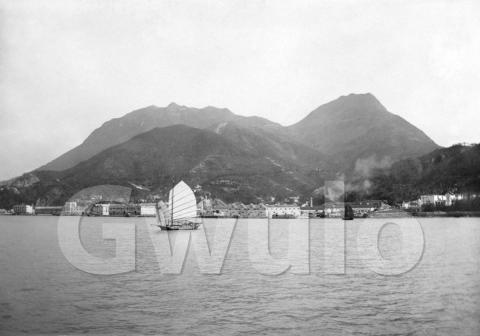
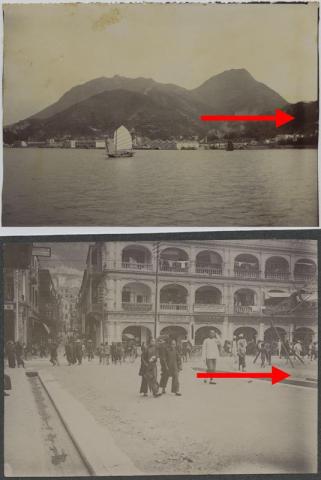
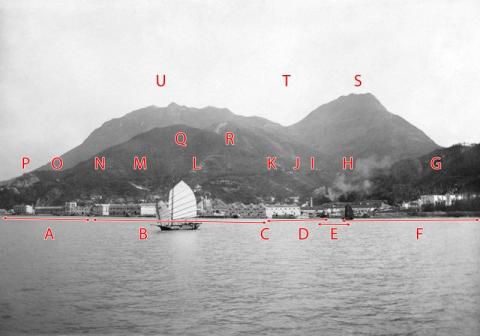
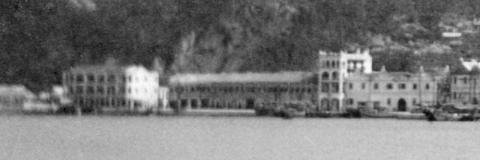
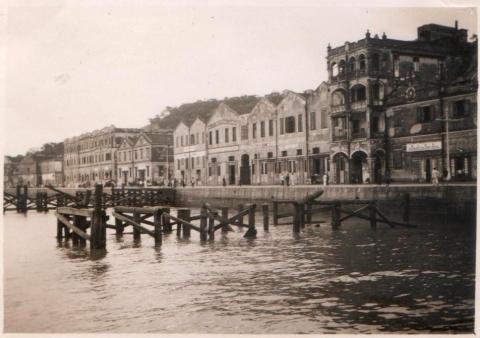
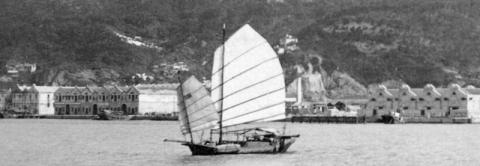





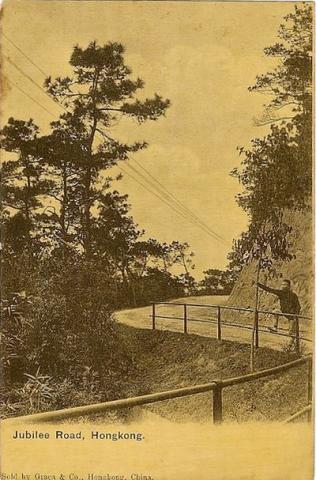

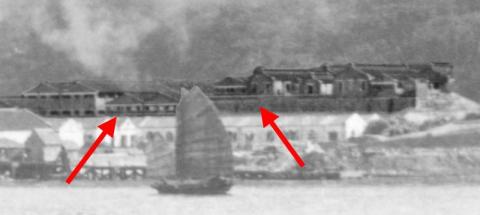
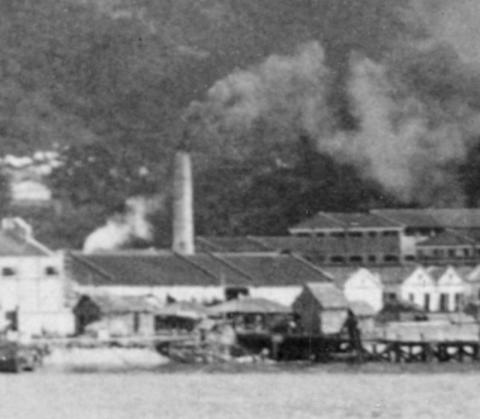
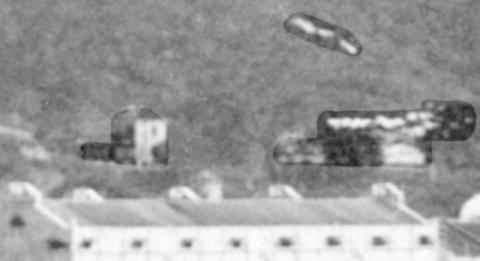
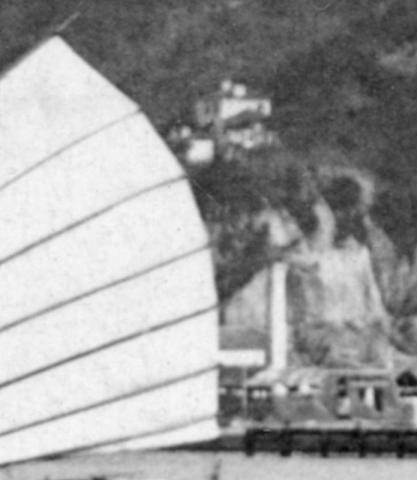
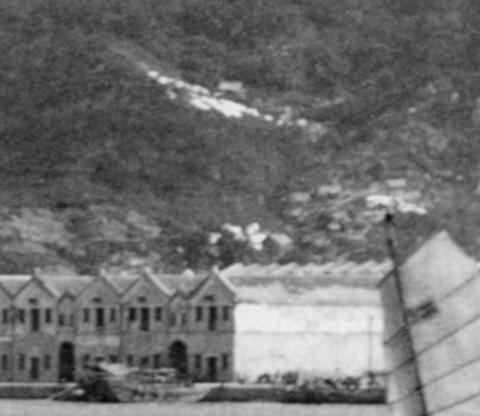
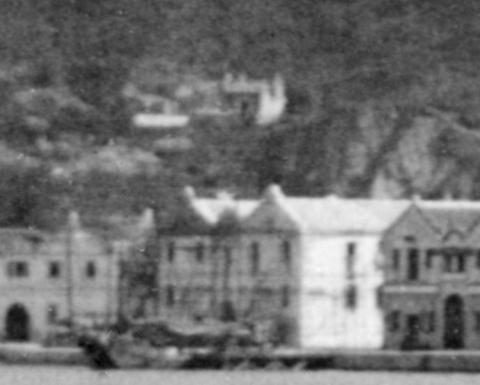

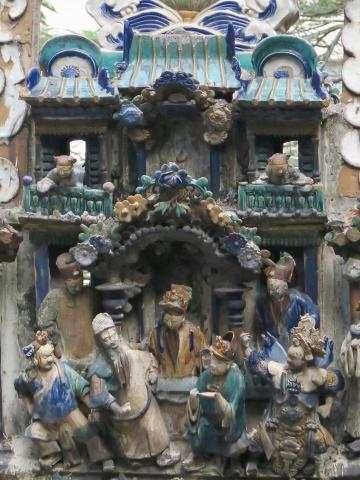
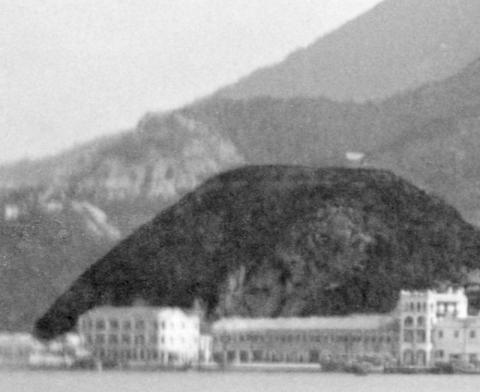

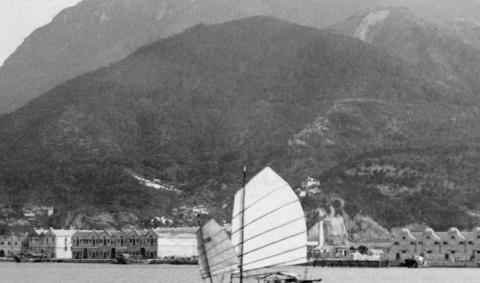
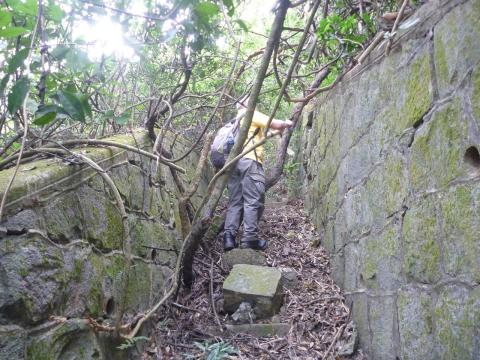
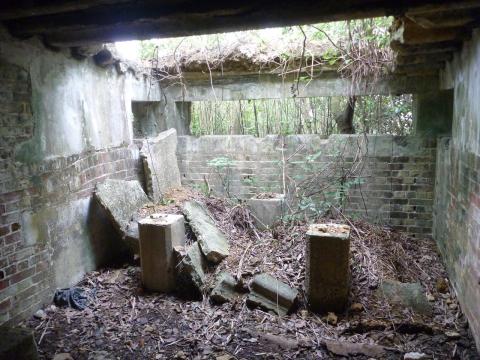
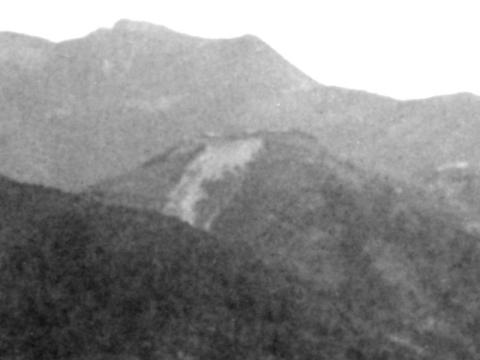
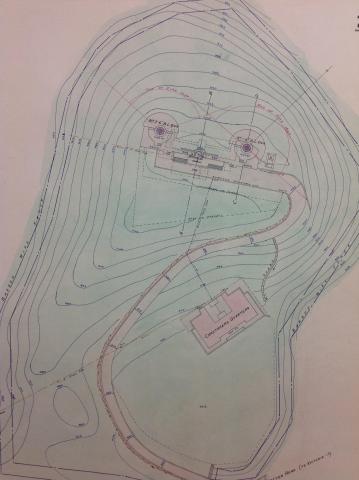
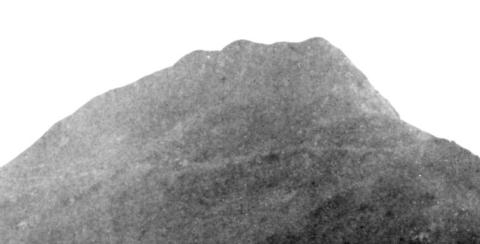
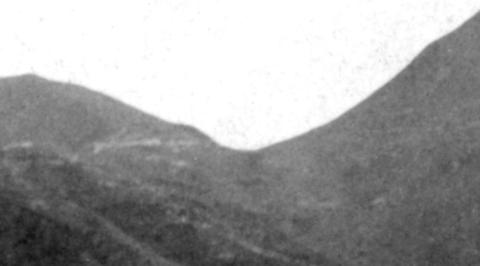
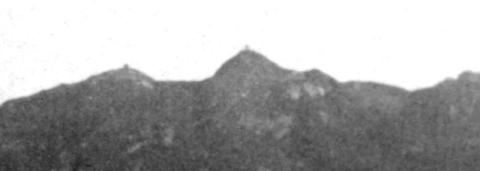
Comments
On your photograph, U The
On your photograph, U The Peak, I think that the very conical hill in the centre of the picture must be the one on which the belvedere stood in Victorian times, and the one on the left is further away, so looks smaller. However, the one on the left is actually higher and is the one on which the Victorian Signal station and mast stood, and was where the R.A.F. had its Battys outstation. I believe that the building on U the Peak is very likely the one that survived right through into the 1950s and which appears on both old Victorian photographs and ones within the 367 Association folder. This aerial photograph taken in 1958, looking more or less to the South West, shows that conical hill at the top right with the tell-tale zig zag path leading up to the small structure that replaced the belvedere. The higher Peak on which the Victorians had their signal station is the one now covered by the large ex R.A.F.buildings in the bottom centre. Andrew
Lo Pan Temple
Dear David,
I guess you are right, that should be the Lo Pan Temple on the hill you have spotted. If the pictures is dating back to around 1904, I reckon it would be showing the 1st generation of the temple which was reconstructured/modifed in 1928. Would it be possible you zoom in even further to reveal more of the temple?
Best regards, Bill
re: Lo Pan Temple
Sorry Bill, that's already at maximum magnification - even if we enlarge it more we can't see any more detail.
Battys
Hi Andrew,
Thanks very much for the explanation. I've followed it through and agree with your explanation.
I had the idea to use a modern photo to help confirm it, as I remember taking a bunch of photos from the ferry to Lamma. I thought it was last year, but turns out it was in April 2018.
It isn't from exactly the same angle as the 1904 photo, but close enough. Here's a close-up of those two hilltops on The Peak.
So today the flatter hill has a couple of large radio towers, and the pointy hill has several smaller towers. That leads to the government map.
The arrow shows roughly the line of sight from the harbour. Looking from the harbour there's a flatter hill (B) on the left with some large radio towers, a flat area of ground in the middle, and a pointy hill (A) on the right with a bunch of smaller towers. That all matches up well with your explanation.
I've found a couple of mistakes that were adding to my confusion. I had the marker for the Batty's Belvedere Place at location (C) on the map. I think that was from looking at the contours on the OSM Map of The Peak, which has the highest land at about that point. I've moved the marker for Batty's to (B).
Thanks for your help - it was bothering me that I couldn't match these all up, so I'm pleased that it all makes sense now.